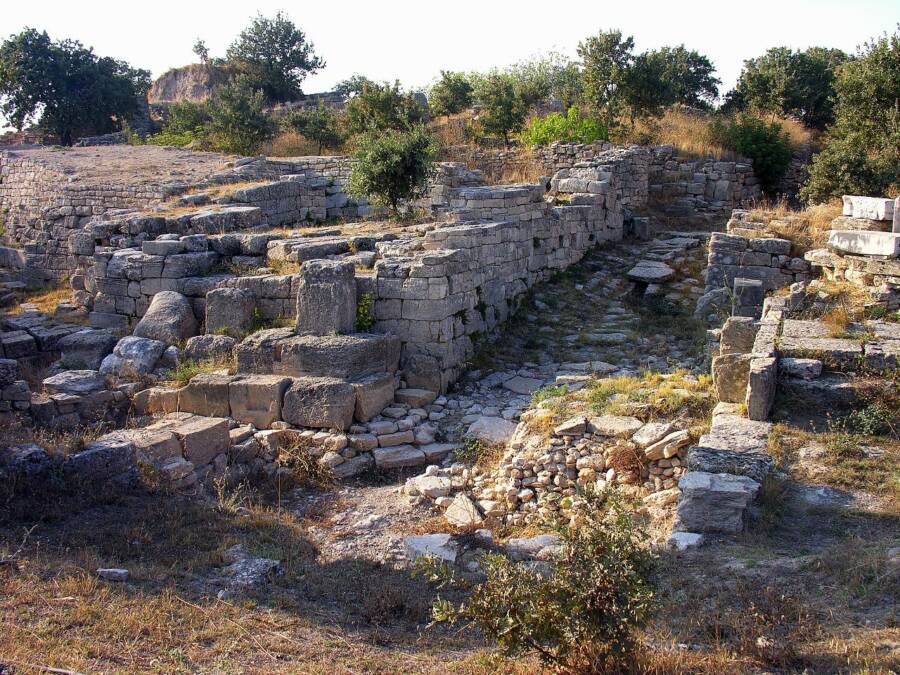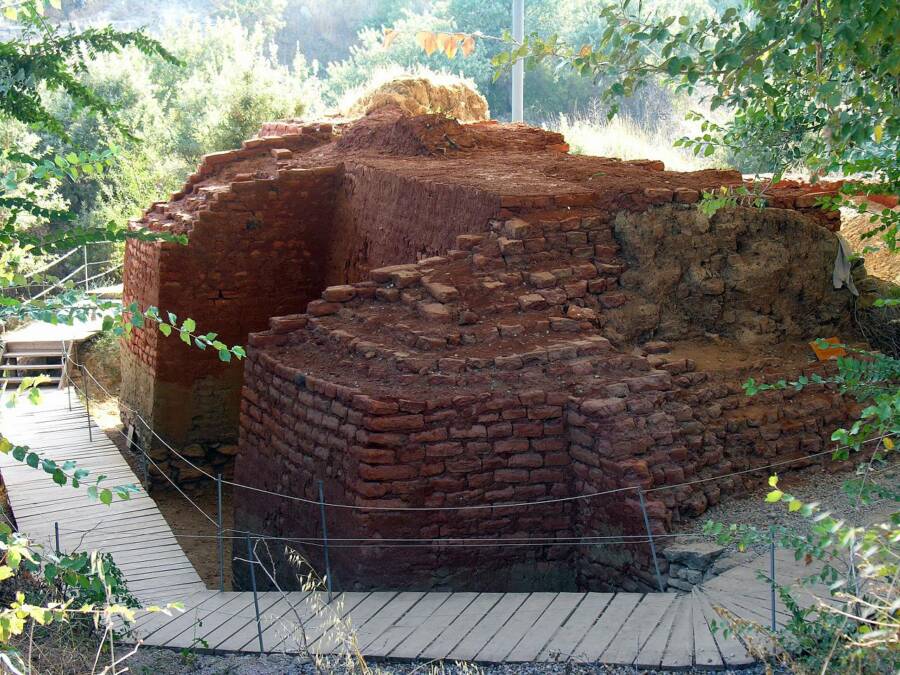Troy: The Site Of The Legendary Trojan War

Dennis G. Jarvis/Wikimedia CommonsThe ruins of Troy in modern-day Turkey.
Troy was an ancient city in northwestern Anatolia that once occupied a key position along trade routes between Europe and Asia.
The city’s prominent role in Homer’s Iliad had incidentally relegated its existence to pure myth for quite some time, up until the 19th century. According to the British Museum, most people believed it to be similar to Atlantis — a fictional place used metaphorically in Homer’s work.
That changed, however, after the lost city was rediscovered by Heinrich Schliemann in modern-day Turkey in 1871.
Unfortunately, Schliemann used dynamite to excavate the site, destroying large swaths of it. Still, there are nine visible layers that reveal more than 3,000 years of continuous habitation, from the Early Bronze Age (around 3000 B.C.E.) through Roman times (85 B.C.E. to 500 C.E.) and later Byzantine settlement.

Dennis G. Jarvis/Wikimedia CommonsDespite decades of excavations at the ancient city of Troy, there is no real evidence that the Trojan War as described in the Iliad took place there.
Ancient Troy commanded a strategic point at the southern entrance to the Dardanelles, a narrow strait linking the Black Sea with the Aegean Sea. As a port city, Troy developed rapidly due to its role in maritime trade throughout history. During its peak in the second millennium B.C.E., Troy featured magnificent limestone walls that were 15 feet thick, 17 feet tall, and dotted with brick ramparts and watchtowers that protected an inner citadel.
Troy was destroyed by a violent earthquake around 1300 B.C.E., and the rebuilt city was subsequently damaged by a devastating fire around 1250 B.C.E., with evidence suggesting it was captured, looted, and burned by enemies.
While there is no solid evidence that the events described by Homer in the Iliad occurred, such as the legend of the Trojan Horse, scholars do believe that the lost city uncovered by Schliemann in 1871 was indeed the home of King Priam mentioned in the epic poem.





